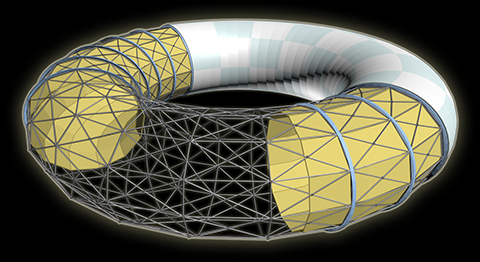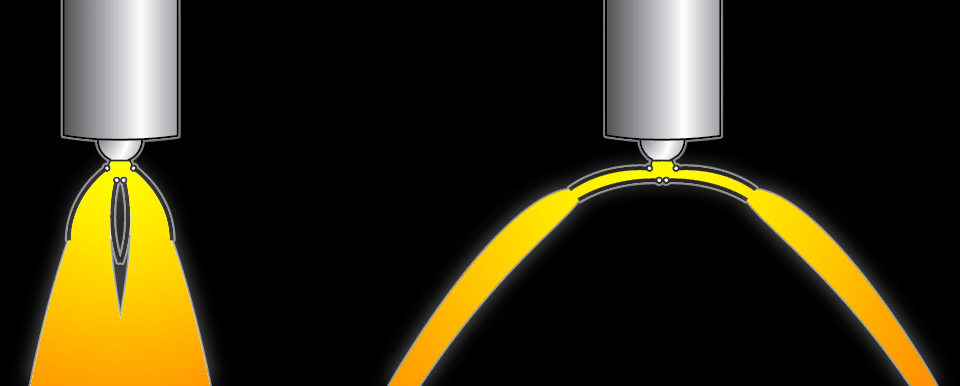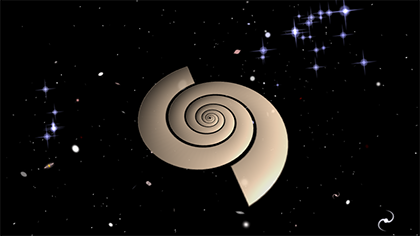News
A Blue Whirl
 Scientists from the University of Maryland discovered a previously unobserved type of flame which they published in an online paper on August 4, 2016, in the peer-reviewed journal Proceedings of the National Academy of Sciences. The phenomenon looks quite similar to an amplipole. It might be the same vortex type or it is one that is closely related to an amplipole. I've added this example on the page where the amplipole is described. You can click on the image on and the correct page will open.
Scientists from the University of Maryland discovered a previously unobserved type of flame which they published in an online paper on August 4, 2016, in the peer-reviewed journal Proceedings of the National Academy of Sciences. The phenomenon looks quite similar to an amplipole. It might be the same vortex type or it is one that is closely related to an amplipole. I've added this example on the page where the amplipole is described. You can click on the image on and the correct page will open.
Name changes for vortex types
The cappellon is now called the capillion
The revotron is now called the revodome
The gown is now called the exoduct
The Huygens belt is now called the hyperbelt
The solacone is now called the hyperkone (pronounced 'hypercone')
The corona pole is now called the amplipole
I've also added an explanation to each vortex type about the origin of the name, the reasons why those names were chosen. You can find the explanations along the pages where the vortex types are described. There you can also find the reason why I decided to discontinue the name 'Huygens belt', which was not an easy decision.
Experimental concept for a high altitude airship
Balloons can reach very high altitudes, the highest of any form of non-rocket propelled transportation, but they're not able to climb above a certain limit. By looking at how one or two particular types of vortices move, I was able to come up with a concept for a new method of air transportation, one that could possibly allow humans to reach altitudes beyond the maximum balloon altitude. Click on the image below and it will bring you to the correct page within the concepts section of this website.
Rocket engine nozzle design concept
I got a new idea for a space rocket nozzle design that could improve the efficiency of the launch system. The idea comes from the trail of light seen in Kazakhstan on 30th June 2010 and a similar phenomenon seen in Severodvinsk, 20th January 2011 and October 2nd 2015 at Cape Canaveral. I've added a new page titled 'Building a Better Rocket' and I've added the page to the concept pages in the science section. Click on the image below to open the page.
The onefield
 I was thinking for some time about changing the name for the universal wave-field. Aether is a word that also refers to some other theories, which can be both classical or modern theories, that do not show that many similarities with the infinity theory. There are still many sources that use the same general meaning for the word aether as found in the infinity theory, but the word is for some reasons problematic. I've decided to rename the wave-field to 'the onefield' and therefore I've now removed all instances of the word aether from all the pages and replaced them with the new name.
I was thinking for some time about changing the name for the universal wave-field. Aether is a word that also refers to some other theories, which can be both classical or modern theories, that do not show that many similarities with the infinity theory. There are still many sources that use the same general meaning for the word aether as found in the infinity theory, but the word is for some reasons problematic. I've decided to rename the wave-field to 'the onefield' and therefore I've now removed all instances of the word aether from all the pages and replaced them with the new name.
Connections with one or more steps missing
When two vortices of a different type connect to one another, then usually these are two vortices that connect because they're two subsequent vortices within the sequence, that share the same characteristics at the end of one vortex and the start of the other vortex. But in some more rare cases a connection occurs where one vortex in the sequence is skipped, but the other two vortices still connect while not being subsequent vortices in the list of vortices. I've added two examples of this on the page titled 'More About Vortices'. You can click on the image below and it will take you to that page.
The accelerating expansion of the universe
I had already briefly mentioned the increase in the speed of expansion of the universe as observed by astronomers, but I had not given an explanation for these observations yet. I have just written down the explanation, and I've made a short animation to illustrate this in a simple way. If you click on the image below then the correct page will open for you.
Change of name for the boundary
Up until recently, the region between the positive and negative dimensions, which is the centerline in the sine curve of the transformation cycles, was called the 'boundary'. I've decided to remove that name from the pages because there is already something called a 'boundary layer', which is a term used in physics and fluid mechanics. There is no exact relation between the word boundary used in the infinity theory and the words boundary layer used in fluid mechanics, and this might have been a cause of confusion.

Therefore I've updated the pages so that from now on only the name of that which is located on the centerline is used, which is the electromagnetic spectrum. A boundary position, thus a location where the sine curve crosses the centerline is from now on called an 'EM crossing location'.
A correction about the light phenomenon of Oct 2nd 2015

I've made a possible mistake in my comments about the light phenomenon that occurred at the Atlas V rocket launch on October 2015. I said that the phenomenon was not caused by the exhaust of the rocket, but as you can see in the photo above, the plume from the exhaust of an Atlas V rocket does widen a lot when nearing high altitudes. The photo is one from a different launch, yet from the same type of rocket. Its shape is almost similar to the shape of the bright giant plume witnessed in October 2015. This makes it more likely that the unexpected light phenomenon was caused by the exhaust of the rocket. Yet it does not explain how the plume grew so large and how it turned into a bright blue color.
The Expansion of the Universe
I've made a new animation that explains why the universe appears to be expanding. You can find the animation on the page about time (click on the image, and it will take you there). What is demonstrated visually in this animation is what was already described by text on that same page. Scale and speed of objects are not realistic in this animation, but that is only for the reason that the animation becomes more understandable.








